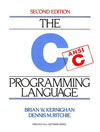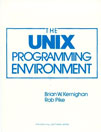C Tutorial: Playing with processes
Catching signals
Signals are a mechanim in Unix to alert, or poke, a process when one of several events happen. In some cases, these signals are generated to kill a program (SIGKILL) or notify the program that an illegal instruction, illegal memory access, invalid system call, or floating point exception took place. Other signals can be user-defined (SIGUSR1, SIGUSR2). When dealing with creating processes, the "child status has changed" signal, SIGCHLD, will be of interest to us. Take a look at the manual page for signal on your system (man signal) to see the full spectrum of signals that is available — they differ somewhat from system to system.
The program will usually exit upon receipt of a signal but it is possible to use the signal function to keep that from happening and either transfer control to a user-specified function when a specific signal is received or to ignore the signal.
We'll go through a few brief examples of using signals
Example 1: catching your own memory access errors
Here's a tiny program that does nothing but read memory location 0, which is an invalid memory location for user processes. This is the same as the classic bug of dereferencing a null pointer, which generally causes the shell to show you a Segmentation fault error message. Compile and run this program just to remind yourself of what happens.
Save this file by control-clicking or right clicking the download link and then saving it as no-signal1.c.
Compile this program via:
If you don't have gcc, You may need to substitute the gcc command with cc or another name of your compiler.
Run the program:
Now let's add a signal handler to trap the signal. In this case, the signal of interest is SIGSEGV – segmentation violation. See man signal for the full list of signals. We create a function called catch that will simply print a message and exit. To tell the operating system that it should transfer control to catch when the SIGSEGV signal is received, we add a call to:
This call to signal should, of course, be made early on in the code before we anticipate getting the event. The function catch gets passed a parameter that contains the signal number. You can call signal multiple times to have different signals call the same function (or different functions). Try this code.
Save this file as signal1.c.
Compile this program via:
Run the program:
Example 2: Sending a signal to a process
Our next example involves sending an external signal to a process that's happily running and minding its own business. We will send it SIGUSR1, which is a user-defined signal via the kill command. The kill command is generally used to kill a process, and it does so by sending it a SIGTERM – the signal to terminate a process. That's just the default behavior and you can use the command to send other signals via the -s option. To send the SIGUSR1 signal, you would simply run:
If you were programming this, you would code:
Here, the main function does three things:
- It calls signal to tell the operating system to call the function catch if the process receives a SIGUSR1 signal.
- It prints a message with its own process ID number to tell the user how to send the kill command.
- It then goes to a loop where it continually goes to sleep for one hour (3600 seconds)
Without receiving a signal, the program is essentially sleeping forever. When you run the program and send it a SIGUSR1 signal via the kill command, however, the catch function is caught and prints a message. It then returns, which causes the program to go back to its endless for() loop.
Save it as signal2.c and compile it program via:
Run the program:
On Linux and Mac OS X systems, it is sufficient to have the catch function simply call the printf function and do nothing else. On SunOS systems, the signal has to be reset whenever it is caught, so you need to add the extra call to signal.
Example 3: detecting the termination of a child process
A parent process receives a SIGCHLD signal whenever the child process terminates. This allows a parent process to go off and do other things but still track the status of its child processes. What we do to accomplish this is set up a signal handler that gets called whenever the process gets a SIGCHLD signal and have that signal handler call wait. Normally, wait puts the process to sleep but in this case we already have that outstanding signal so wait simply picks up the status of a child and returns immediately. Calling wait on child processes is good programming practice since it ensures that the child process does not remain a zombie, which is a process that has terminated but is still taking up space in the process table on the chance that a parent process will need to call wait to get its exit status.
In this sample program, we essentially copy the example we used for wait but now, instead of waiting for the child to die, the parent sleeps for 10 seconds and then exits. In reality, of course, you will probably have the parent do useful work, such as getting and processing input from a user or doing other task.
The child prints a message annoucing itself, sleeps for three seconds, and then annouces that it's exiting. The parent process gets the SIGCHLD signal when the child process exits, which causes the catch function to be called. This function prints a message that it detected the death of a child and prints its exit status. It then returns, at which point the parent exits. Note that the parent's sleep was interrupted.
Save it as signal3.c and compile it program via:
Run the program:
Example 4: detecting the termination of multiple child processes
Our final example is a small variation of the previous one. Instead of forking off one child, the parent will fork off four processes (or change NUMPROCS to whatever you want). As soon as the parent forks off a child, it loops back to create another one until it has created NUMPROCS of them. When a process is created, the variable nprocs is incremented to count the number of processes that we forked.
The parent then goes into a sleep loop:
This looks like it will loop forever but two additional things are happening:
- Whenever the parent gets the SIGCHLD signal and the catch funciton is called, the call to sleep is interrupted, so that sleep immediately returns. /li>
- The signal handler, catch, decrements the count of child processes, nprocs, whenever it is called.
Save it as signal4.c and compile it program via:
Run the program:
Note: the signal system call has been replaced with a more robust version, called sigaction. If you plan on doing extensive programming using signals, be sure to read up on this. The signal that we're using is really a library wrapper over sigaction


